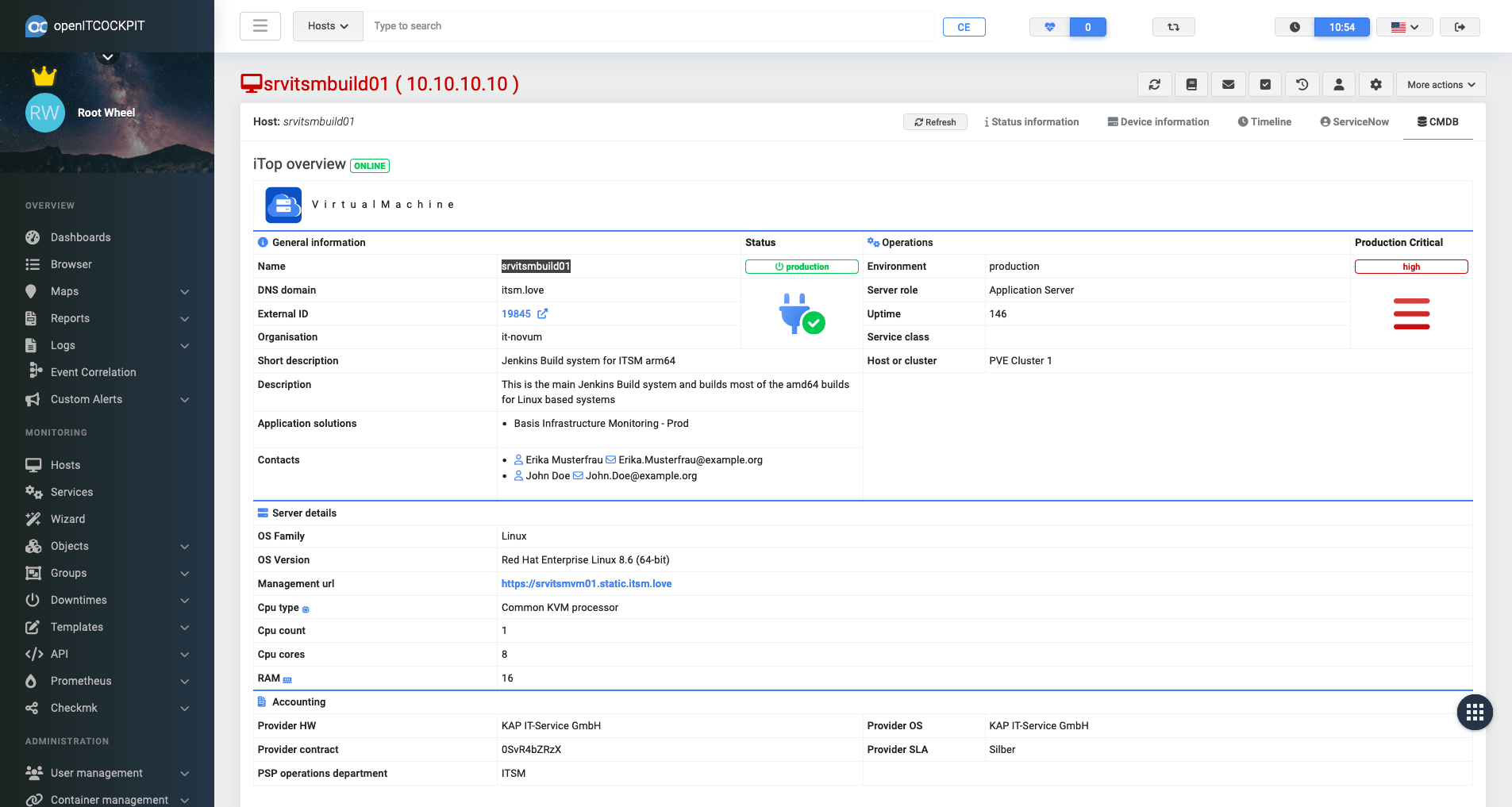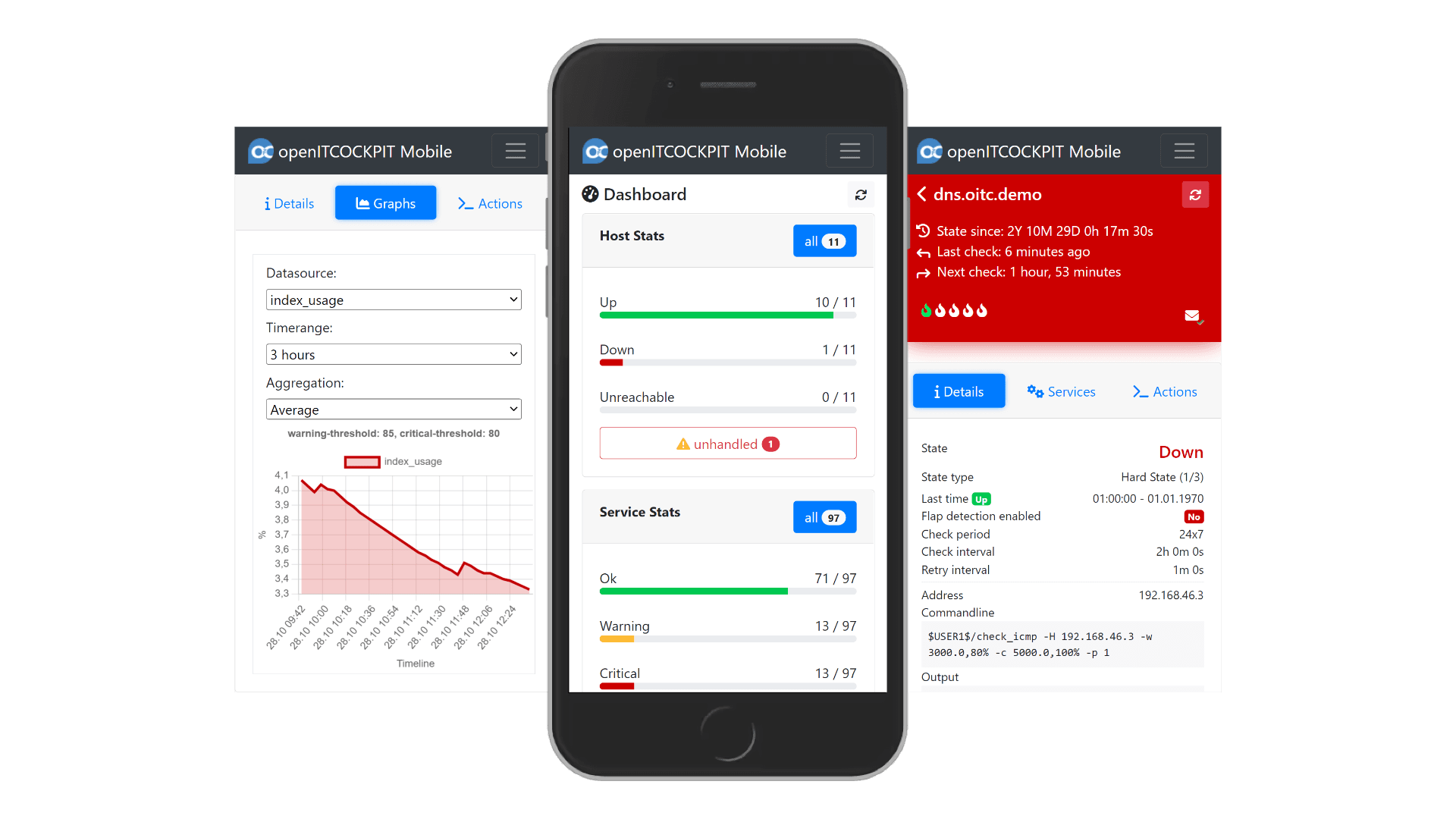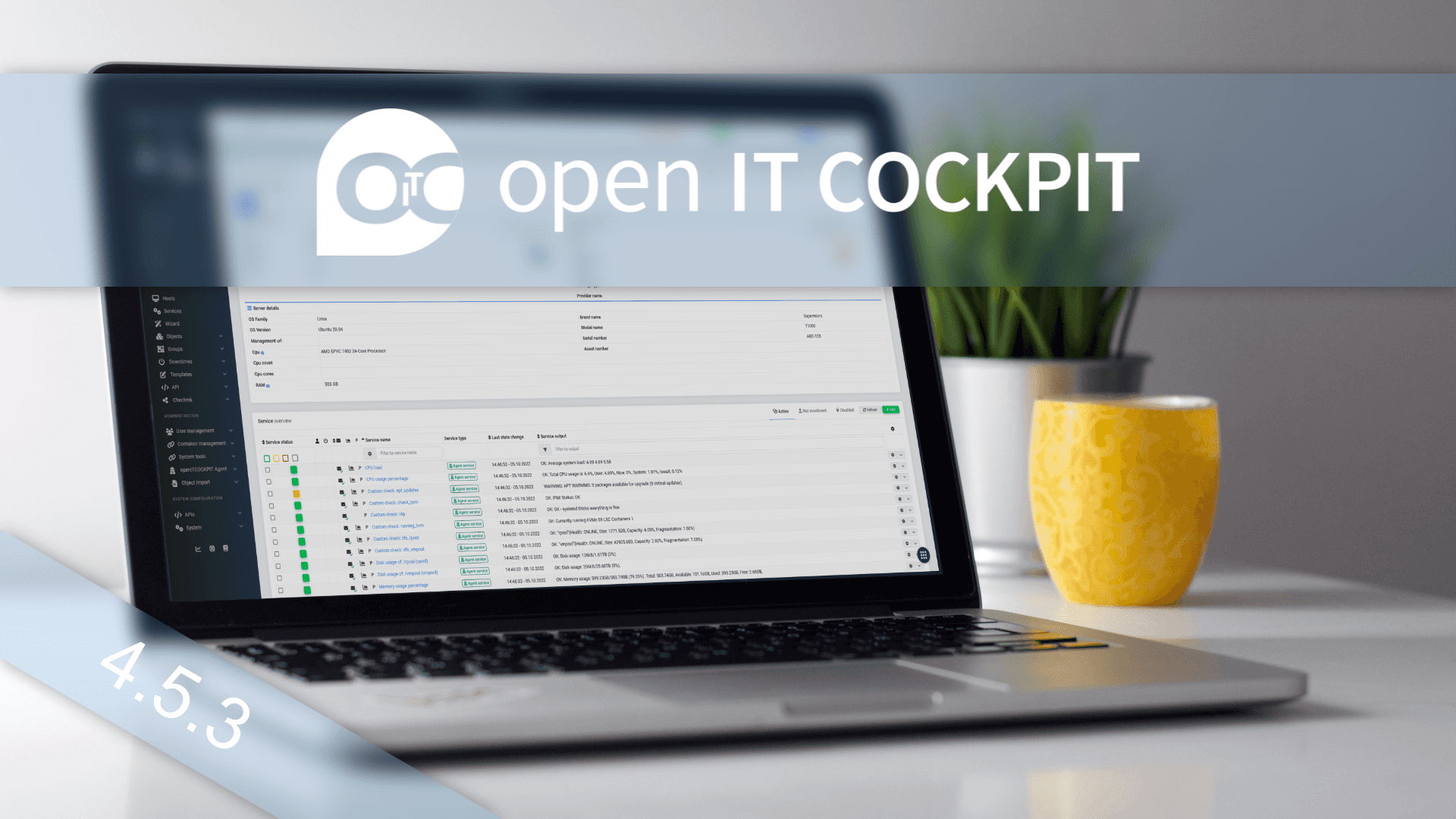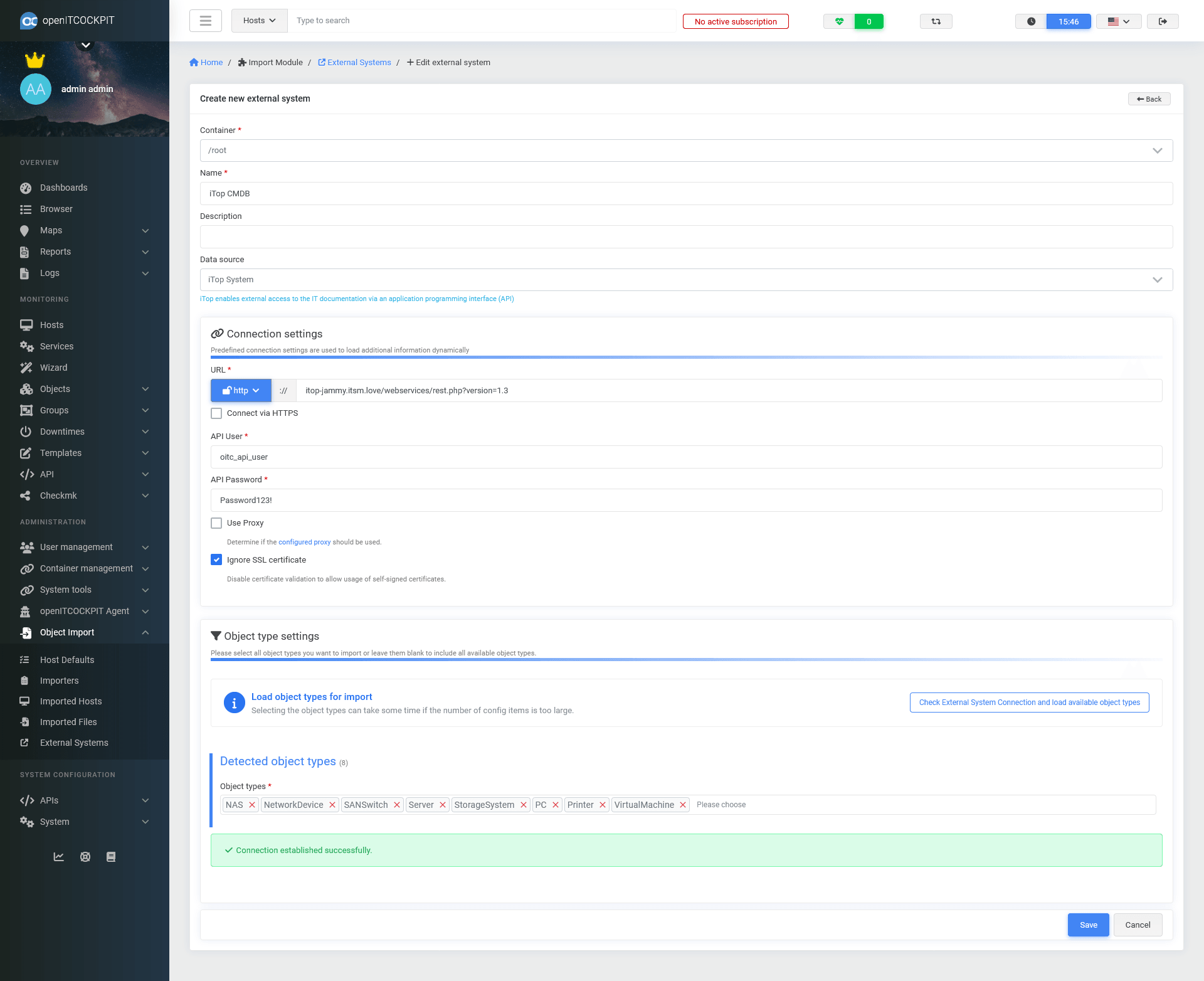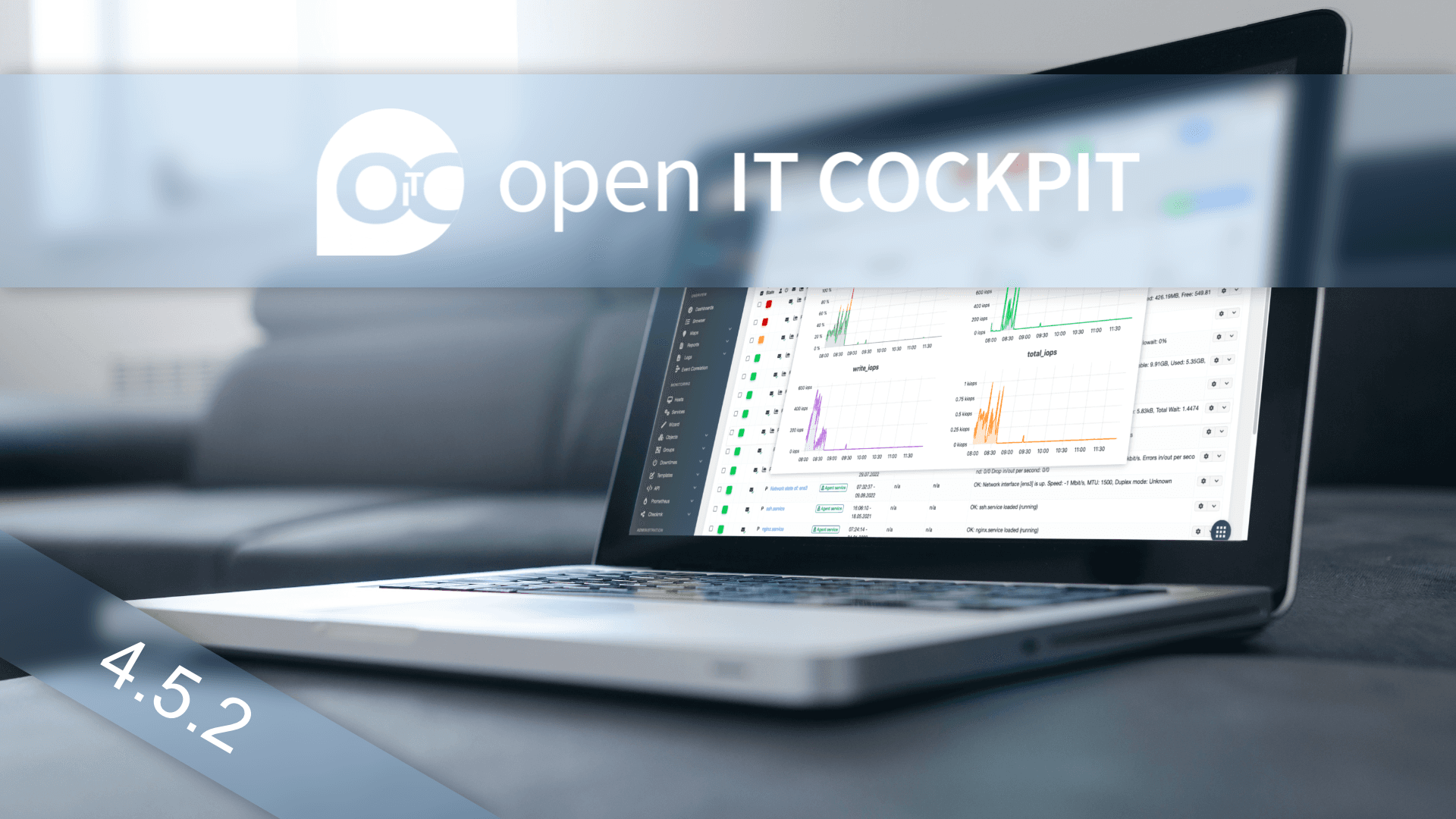openITCOCKPIT 4.5.4 released
openITCOCKPIT version 4.5.4 has been released.
Import Module: Improved Combodo iTop CMDB view
Based on the provided user feedback, we optimized which fields of the iTop CMDB will diplayed in openITCOCKPIT.
SELinux
openITCOCKPIT will now install required SELinux rules on RHEL based systems automaticaly. The rule files are provided by separate packages:
openitcockpit-selinuxopenitcockpit-satellite-selinux
The rule files are located at /opt/openitc/selinux/.
openITCOCKPIT Mobile 1.2 released
Refreshed user interface
The new user interface provides a more consistent and cleaner experience. The host- and service status is now much more visible which helps to identify issues faster. The best way to see all changes is by experience the new interface first hand!
But wait there’s even more. We optimize the backend code of openITCOCKPIT Mobile to resolve an issue with fast expiring user sessions.
openITCOCKPIT 4.5.3 released
openITCOCKPIT version 4.5.3 has been released.
Import Module: Combodo iTop
The Import Module of openITCOCKPIT has now support for the open source CMDB Combodo iTop. iTop got implemented as an alternative CMDB.
iTop as external system
The configuration wizard for external systems can be used, to define a new iTop instance. openITCOCKPIT will check the provided API credentials and you can pick which object classes you like to import.
openITCOCKPIT will query all objects from the iTop CMDB and will create hosts/services depending on the user defined role set (Host Defaults).
openITCOCKPIT 4.5.2 released
openITCOCKPIT version 4.5.2 has been released.
New look of the graphs
openITCOCKPIT provides chart based information on many places. From time to time we adjust the look and feel of our charts. With openITCOCKPIT 4.5.2 we adjusted the colors and enabled smooth chart rendering for a more modern look.
Also, all charts are now displaying threshold values, if available.
Chart in service details overview:
openITCOCKPIT 4.5.1 released
openITCOCKPIT version 4.5.1 has been released.
Revert changes to host group container permissions
The openITCOCKPIT 4.5.0 we introduced a major change to the permissions of host groups. This change was done, because of a paradox which the user permissions. If you add a Host from a sub-container to a host group which is located in the Root-Container, you are changing the host group object. This would require write permissions to the Root-Container.
We addressed this issue with openITCOCKPIT 4.5.0. Unfortunately this change caused massive side effect so we decided to rollback the old behavior.
We also resolved an bug, there the form for editing hosts did not display all available hostgroups due to the paradox permissions.
We apologize for the inconvenience caused.

